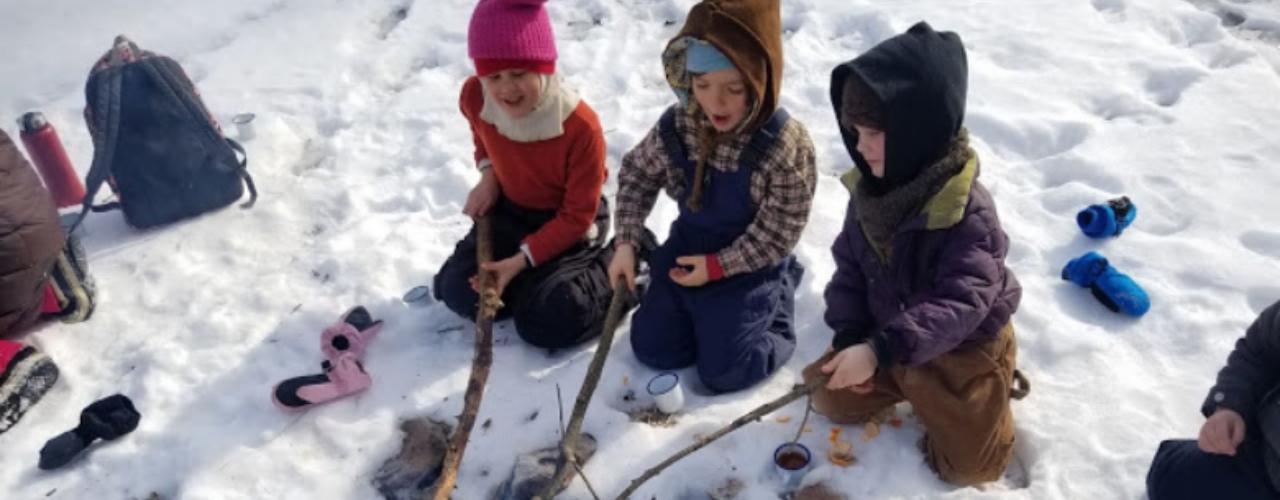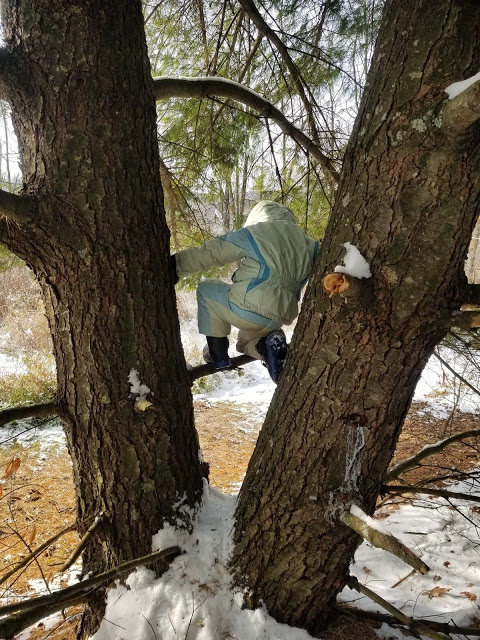
The Kickapoo Valley Forest School Leadership Team and Governance Council members recently attended a professional development training on risk and play in early childhood with Ross Thompson, M.Ed., an early childhood educator and teaching specialist. Ross shared some important perspectives and considerations for our team as we build the culture of forest schooling in our region. We have a few highlights that we'd like to share with our outdoor learning community.
When it comes to defining risk and play, everyone has their own internal risk calculator. As Ross pointed out, "Risky play depends on who is playing and how they feel." One person may think climbing a tree feels risky, while another person may think speaking out loud in front of a group feels like a big risk. For those of us who work and care for children, considering risk from the standpoint of how we personally view risk is an important first step.
How did you play as a child? What experiences did you have that involved risk for you? Were they physical, social, emotional?
As we consider how our own experiences inform how we work with children, it's important to understand that our concern for the risks of a particular situation may be tied more directly to our own experiences than to the reality of our children's experiences.
Creating an environment where children can safely explore is essential to building strong bodies and critical thinkers. When the environment is controlled to eliminate any or all risks, children may lose some of their ability to weigh, ponder, and consider their actions and decisions.
This doesn't mean that anything goes! In fact, it requires the adults in a caregiving environment to be vigilant and engaged in assessing risk but to do so in collaboration with children. Forest schooling is an amazing opportunity to provide children with natural risk-taking opportunities through lots of opportunities to watch, try, practice, and master many things that might be considered too risky in other learning environments.
For example, many children love to climb and experience height. Rather than telling them it isn't safe to climb a tree or to rely on the common refrain of, "Be careful!" how might we help them consider the finer points of climbing? We could try asking questions like,
"How can you check that the branches will hold you?"
"What's your plan for climbing down?"
Another important point Ross shared is that while risky play often challenges our comfort zones, it should never be dangerous, terrifying, anxiety-provoking, or forced. Children thrive in environments that allow them to take their time and approach a challenge on their own terms. For some children, this might mean watching other children for an extended amount of time before feeling ready to try. Ross shared a great example of a variety of stumps placed in a learning space. Some children feel ready to jump off the tallest stump, and others need lots and lots of practice on the lower stumps. The benefits of having multi-age groups exploring and learning together reinforces the need for some children to play with more risk, and others to watch and observe on their own time.
During our training session, we learned more about how play that involves risk helps develop motor skills, social and emotional frameworks, creativity, and cognitive capacity in young children. We look forward to sharing more about how risk, play, and forest schooling intersect at an upcoming KVFS Virtual Roundtable event on November 17, 2020. Visit our website at kickapoovalleyforestschool.org for the link.
For more information about Ross Thompson's work, check out his podcast, Teaching with the Body in Mind, and visit the associated Facebook page.
Robin Hosemann, Guest Writer
Kickapoo Valley Forest School

